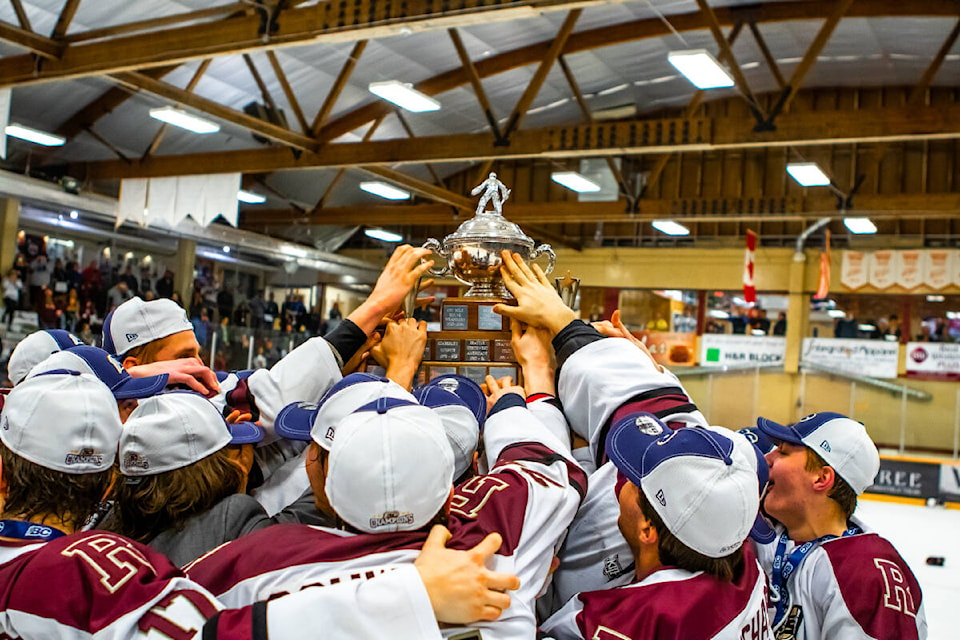The CEO of BC Hockey says he is “excited” about the decision to reclassify the province’s three Junior B leagues to Junior A – Tier 2.
Cameron Hope fielded questions in a press conference about the decision on Tuesday, July 25 following the announcement.
READ MORE: BC Hockey approves Junior A status for three Junior B hockey leagues
The decision affects 45 teams in three leagues: 20 in the Kootenay International Junior Hockey League (KIJHL), 14 in the Pacific Junior Hockey League (PJHL) and 11 in the Vancouver Island Junior Hockey League (VIJHL).
There are still many details that need to be ironed out, Hope said.
One of the main things discussed is the opportunity for these newly designated Tier 2 teams to pursue Junior A - Tier 1 designation.
”We’re going to let the ecosystem settle and just be mindful of everybody’s best pathway to end up where they want to be,” Hope said. “There are going to be some changes. These three leagues operate within specific geographical footprints because of how unique B.C. is.
“We’re going to maintain that for now, but there’s no question that as clubs strive quickly to become Tier 1 and be ready to take on more, there may be a reshuffle there, so we’ll let it take its own path, we don’t want to force that and we don’t want to force the time either.”
Hope also said he doesn’t think every franchise will want to step up and ask to be evaluated to Tier 1, partially due to increased costs associated with the enhanced standards Tier 1 designation will have, in terms of practice and travel.
“We’re going to take baby steps first, we’re going to let everybody crawl, then we’re going to get them all walking and those that don’t want to walk, and certainly those that don’t want to run, have the option of staying and just saying no, we’re not going to be able to do this.
“But we want everybody to have the opportunity. So it’s not just about raising standards and raising player experience, it is about the reality of some of the communities and some of the less-funded franchises to decide whether or not they want to take a deep breath and take a deep plunge.”
Another uncertainty that still needs to be determined is the future of the Cyclone Taylor Cup, the championship these three leagues compete for each year.
“In terms of the Cyclone Taylor Cup, we’re open to suggestions on that one that’s on the list of things to figure out what to do,” Hope said. “It’s a storied and historic part of B.C. Hockey and we have to figure that out.”
The application for Junior A status came after the BC Hockey League decided to leave Hockey Canada to become independent, leaving a Junior A void in B.C.
Hockey Canada and the Western Hockey League (WHL), Hope said, have been very receptive to this reclassification, as it keeps a credible pathway within sanctioned hockey very soon after BCHL’s departure.
READ MORE: BCHL splits from Hockey Canada, forms independent league
“We have a lot of players that they hope will end up in the WHL in our system, and that development path is critical to them,” he said. “Ultimately it’s not a good thing to have a big, strong branch like ours out here in B.C. not represented at the Centennial Cup and not represented nationally.
“And so step by step, we’ll get these leagues…in shape to knock on the door of the CJHL and be able to join that group, so they’re keenly interested.”
In terms of what fans can expect this coming season when they go see their local teams play, Hope said the changes are mainly going to be things the fans don’t see.
“The things that are happening behind the scenes in terms of the standards for the player experience, which is where we’re focused here, and for that development path, are the things that are going to change,” he said.
“That will ultimately translate into players that are playing at a higher level, there’ll be different standards in terms of how they’re travelling and how they’re practicing and whether or not that’s visible to the fans right away. I don’t know but it’s exciting.”
paul.rodgers@kimberleybulletin
Like us on Facebook and follow us on Twitter
